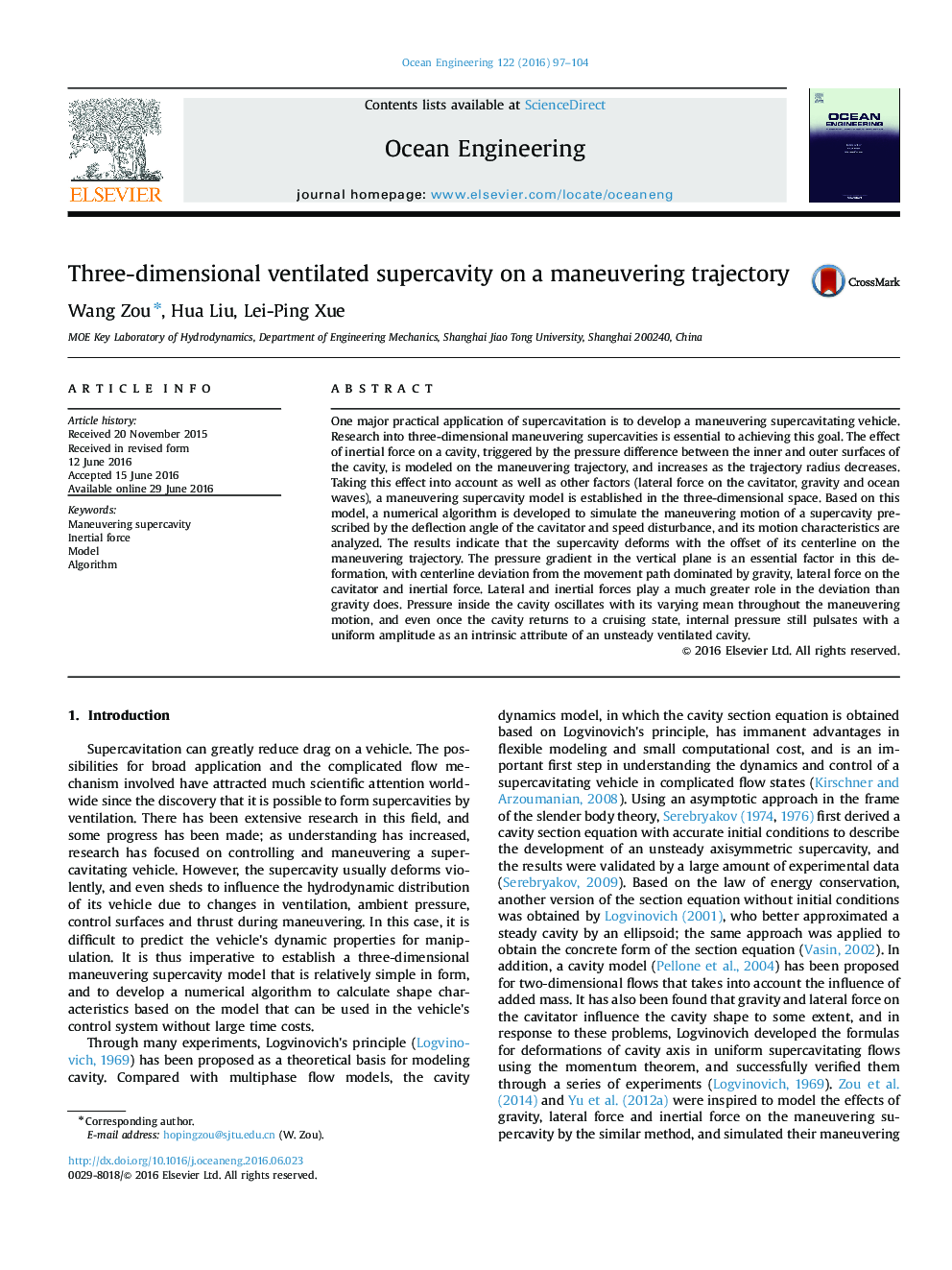| Article ID | Journal | Published Year | Pages | File Type |
|---|---|---|---|---|
| 1725001 | Ocean Engineering | 2016 | 8 Pages |
Abstract
One major practical application of supercavitation is to develop a maneuvering supercavitating vehicle. Research into three-dimensional maneuvering supercavities is essential to achieving this goal. The effect of inertial force on a cavity, triggered by the pressure difference between the inner and outer surfaces of the cavity, is modeled on the maneuvering trajectory, and increases as the trajectory radius decreases. Taking this effect into account as well as other factors (lateral force on the cavitator, gravity and ocean waves), a maneuvering supercavity model is established in the three-dimensional space. Based on this model, a numerical algorithm is developed to simulate the maneuvering motion of a supercavity prescribed by the deflection angle of the cavitator and speed disturbance, and its motion characteristics are analyzed. The results indicate that the supercavity deforms with the offset of its centerline on the maneuvering trajectory. The pressure gradient in the vertical plane is an essential factor in this deformation, with centerline deviation from the movement path dominated by gravity, lateral force on the cavitator and inertial force. Lateral and inertial forces play a much greater role in the deviation than gravity does. Pressure inside the cavity oscillates with its varying mean throughout the maneuvering motion, and even once the cavity returns to a cruising state, internal pressure still pulsates with a uniform amplitude as an intrinsic attribute of an unsteady ventilated cavity.
Keywords
Related Topics
Physical Sciences and Engineering
Engineering
Ocean Engineering
Authors
Wang Zou, Hua Liu, Lei-Ping Xue,
